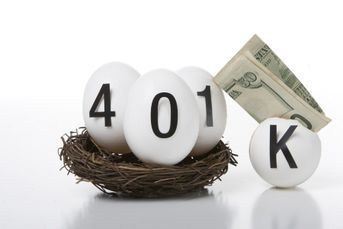Investors turn on biotechnology as largest ETF in sector suffers record withdrawals
But analysts divided over longer-term prospects: Some see end of bull market while others see pause.
Investors pulled a record $372 million from the biggest biotechnology exchange-traded fund in its worst day of redemptions ever.
The withdrawals from the iShares Nasdaq Biotechnology ETF on April 4 were the most since its 2001 inception, with 7.5% of the fund’s $4.98 billion in total assets leaving what is the biggest biotech-focused ETF, according to data compiled by Bloomberg. It follows a lengthy run-up in biotechnology industry stocks.
Now, “that momentum money is being sucked out,” said Geoffrey Porges, an analyst with Sanford C. Bernstein & Co.
Health-care ETFs have boomed this year, attracting more deposits than any other sector and adding $3.98 billion since Jan. 1. That increase has been spurred by a biotechnology sector that last year gained 74%, compared with a 30% increase in the S&P 500.
Recently, investors have begun to question whether biotechnology stocks are in a bubble and whether the companies developing complex and often expensive medicines are worth their high valuations. After gaining 11% in January and February, the Standard & Poor’s 500 Biotechnology Index has fallen 11% since March 3.
‘FINAL INNINGS’
“We consider the sector’s run-up, which has been remarkable, to be getting into its very final innings,” Mr. Porges said. Stocks could be set for a significant move downward, especially if generalist investors decide to leave, he said.
Robyn Karnauskas, an analyst with Deutsche Bank AG, disagrees.
“The way I see it, I think we’ve turned the corner,” she said. “I don’t see this as downside. When the fundamentals are strong and you have catalysts like earnings, I don’t think we’re headed for a bear period.”
The Nasdaq Biotechnology exchange-traded fund, also known as the IBB, is made up of the shares for 122 biotechnology and medical companies including its biggest holdings — Amgen Inc., Gilead Sciences Inc. and Celgene Corp. The SPDR S&P Biotech ETF also had its worst day since May 2010 on April 4 as investors pulled $80 million, or 6.6% of assets.
PESSIMISTIC INVESTORS
There are other signs investors are pessimistic. In the Nasdaq Biotechnology ETF, 15% of all the shares outstanding — $665 million worth — are short, meaning investors have bet they’ll fall in value, according to data compiled by Bloomberg and Markit Group Ltd.
Other health-care focused ETFs with more diversified assets didn’t see similar withdrawals. For example, the Health Care Select Sector SPDR Fund, which also has pharmaceuticals and health-care products and services stocks, gained $90 million on the biotech ETF’s worst day.
Some of that may be profit-taking near the end of the quarter, said Paul Weisbruch, a vice president at Street One Financial. “It’s a reflection of, probably, end-of-the-quarter selling of the winners if you will, because biotechs have done really well,” he said. His firm analyzes and trades ETFs.
Investors aren’t just moving out of biotech funds, they’re also exiting more volatile sectors that haven’t fared well recently, he said.
Industries with high volatility are what “you see selling off — small caps, social media,” Mr. Weisbruch said. “As fast as it went up, it’s coming down.”
(Bloomberg News)
Learn more about reprints and licensing for this article.








